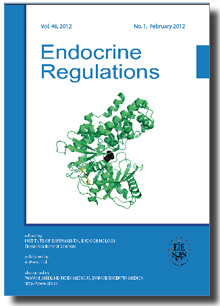Endocrine Regulations Vol.40, p.69-75, 2006
|
| Title: LIMITATIONS OF CLINICAL UTILITY OF GROWTH HORMONE STIMULATING TESTS IN DIAGNOSING CHILDREN WITH SHORT STATURE |
| Author: MACIEJ HILCZER, JOANNA SMYCZYNSKA, ANDRZEJ LEWINSKI |
|
Abstract: Objective. The diagnosis of growth hormone (GH) deficiency (GHD) is routinely based on the results of two stimulating tests performed with different stimuli. Arbitrarily established, equal cutoff levels for the tests with different pharmacological stimuli, as well as a relatively high incidence of falsely decreased (FD) response in the tests have been reported. Falsely decreased GH response in one of the two performed tests does not exclude FD response in the second one, so, it seems very important to assess the incidence of FD response in both GH stimulating tests. Subjects and methods. The analysis comprised the results of two GH stimulating tests (the 1st one with clonidine, the 2nd one with either insulin or glucagon) performed in 780 short children. Results. The mean GH peak in the test with clonidine was significantly higher than that in both other tests (pabove data: A. P(1st NT, 2nd NT) = P(1st NT) ∩ P(2nd NT) = 0.150; B. P(1st NT, 2nd FD) = P(1st NT) ∩ P(2nd FD) = 0.363; C. P(1st FD, 2nd NT) = P(1st FD) ∩ P(2nd NT) = 0.079. The expression (B∩C)/A was calculated by transforming the right side of the equations: (BxC)/A = 0.192. Thus, 19.2 %, out of all 780 patients, i.e., 150 children (47.2 % of 318 patients, assessed as GH-deficient), could have both test results FD. Conclusions. The observed differences in GH response to particular pharmacological stimuli, as well as the high incidence of falsely decreased GH response in the two stimulating tests, should be taken into account in qualifying short children to GH therapy.
|
|
| Keywords: growth hormone, short stature, stimulating tests |
| Year: 2006, Volume: 40, Issue: 3 |
Page From: 69, Page To: 75 |
|
|
|
|
Price:
12.60 €
|
|
|
|
|
|
|
|

